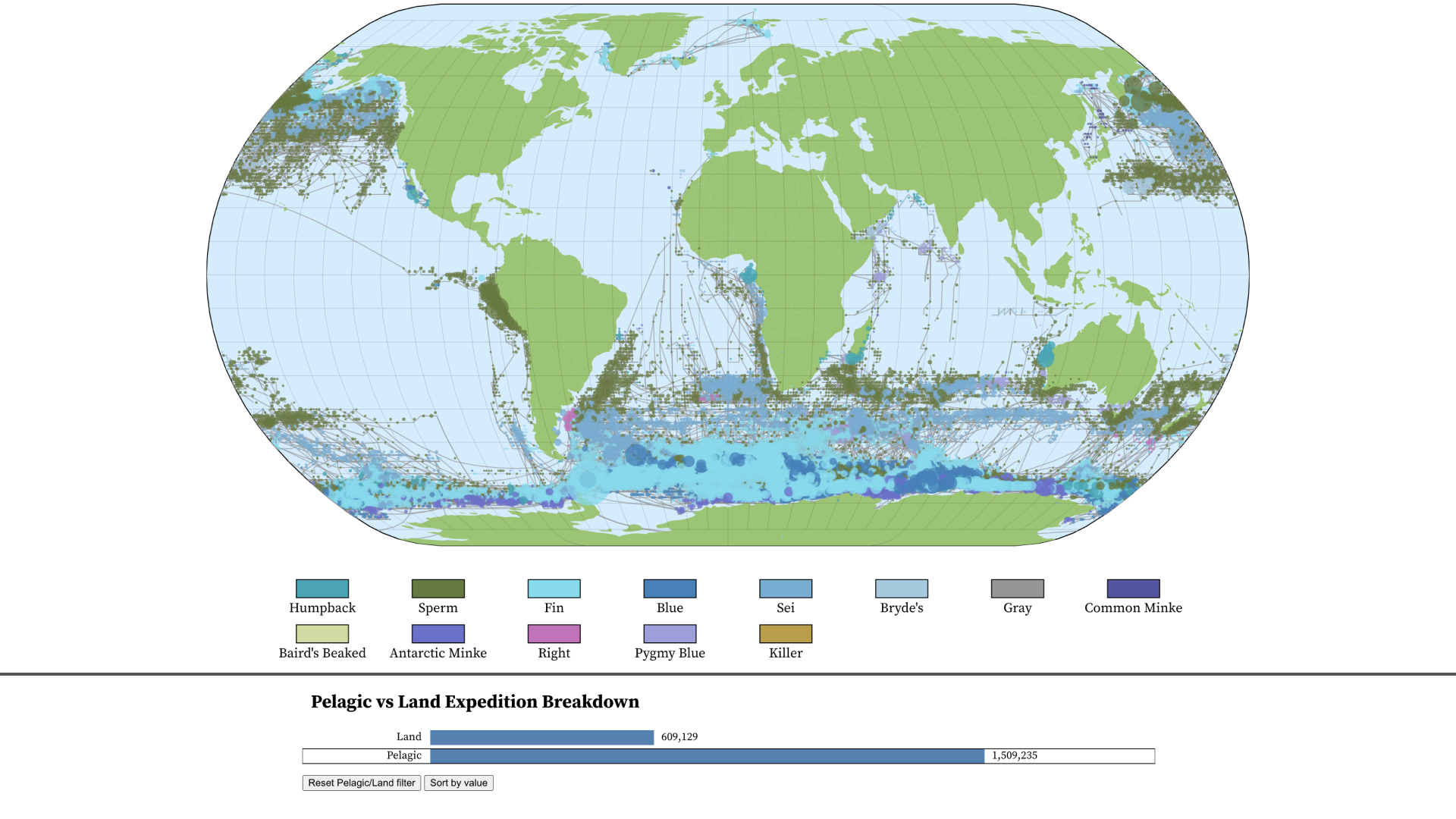UW Interactive Data Lab
papers

WhaleVis: Visualizing the History of Commercial Whaling
Ameya Patil, Zoe Rand, Trevor Branch, Leilani Battle
Proc. IEEE VIS Short Papers, 2023

Materials
Abstract
Whales are an important part of the oceanic ecosystem. Although historic commercial whale hunting a.k.a. whaling has severely threatened whale populations, whale researchers are looking at historical whaling data to inform current whale status and future conservation efforts. To facilitate this, we worked with experts in aquatic and fishery sciences to create WhaleVis—–an interactive dashboard for the commercial whaling dataset maintained by the International Whaling Commission (IWC). We characterize key analysis tasks among whale researchers for this database, most important of which is inferring spatial distribution of whale populations over time. In addition to facilitating analysis of whale catches based on the spatio-temporal attributes, we use whaling expedition details to plot the search routes of expeditions. We propose a model of the catch data as a graph, where nodes represent catch locations, and edges represent whaling expedition routes. This model facilitates visual estimation of whale search effort and in turn the spatial distribution of whale populations normalized by the search effort—a well known problem in fisheries research. It further opens up new avenues for graph analysis on the data, including more rigorous computation of spatial distribution of whales normalized by the search effort, and enabling new insight generation. We demonstrate the use of our dashboard through a real life use case.
BibTeX
@inproceedings{2023-whale-vis,
title = {WhaleVis: Visualizing the History of Commercial Whaling},
author = {Patil, Ameya AND Rand, Zoe AND Branch, Trevor AND Battle, Leilani},
booktitle = {Proc. IEEE VIS Short Papers},
year = {2023},
url = {https://idl.uw.edu/papers/whale-vis},
doi = {10.1109/VIS54172.2023.00028}
}
